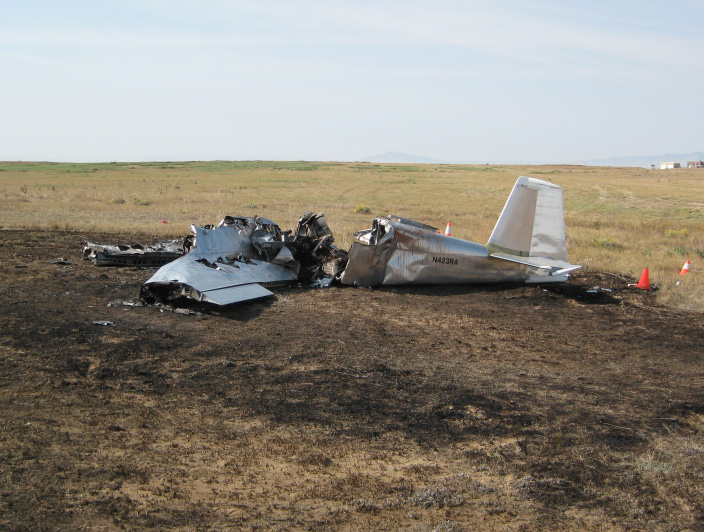
The National Transportation Safety Board has determined that a decision to attempt to land on the wrong runway contributed to the plane crash that killed a Duluth doctor.
Donald Kundel, 79, died in the 2012 incident in Laramie, Wyoming. He had left Duluth several hours earlier to visit his son.
According to the just-released NTSB report:
The pilot approached runway 21 straight in from the northeast, after having completed a cross-country flight. Before attempting to land at the non-towered airport, the pilot overflew runway 21 before making a left turn and entering a left downwind for runway 21.
A witness reported seeing the airplane while on final approach just east of the airport about 300 to 400 feet above ground level (agl), “…and everything looked normal,” but as the airplane got closer he observed some “wing rock,” similar to a small Dutch Roll.
Shortly thereafter, when the airplane was about 100 to 150 feet (above ground level), its left wing dipped a little, followed by the right wing dropping very fast, which was then followed by a spin to the right and subsequent impact with terrain.
A post-impact fire subsequently erupted, which consumed the forward section of the airplane. The wind was reported to be 350 degrees at 14 knots, with gusts to 24 knots, about the time of the accident. A wind of such direction and velocity would have likely resulted in a significant tailwind for the pilot to contend with.
The pilot’s decision to attempt a downwind landing in gusting wind conditions likely resulted in his loss of airplane control and subsequent impact with terrain. The airport was also equipped with a 90-degree intersecting runway, runway 30, which should have been the runway of choice given the prevailing wind; it was not clear why the pilot did not elect to use this runway.
A postaccident examination of the airframe and engine revealed no mechanical anomalies that would have precluded normal operation.
With the tailwind, a sudden gust would reduce the plane’s airspeed. A 10 knot gust reduces the airspeed by about 10 knots and if the pilot is already flying within 10 knots of stall speed (the speed at which a plane’s wings can no longer provide lift), the plane will stall, roll, and crash as this one did.
Typically, a pilot lands into the wind and compensates for gusty conditions by flying a few knots faster than a normal landing.
